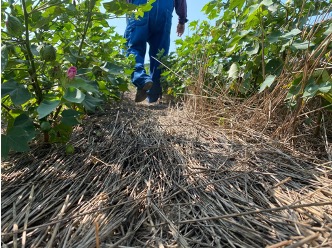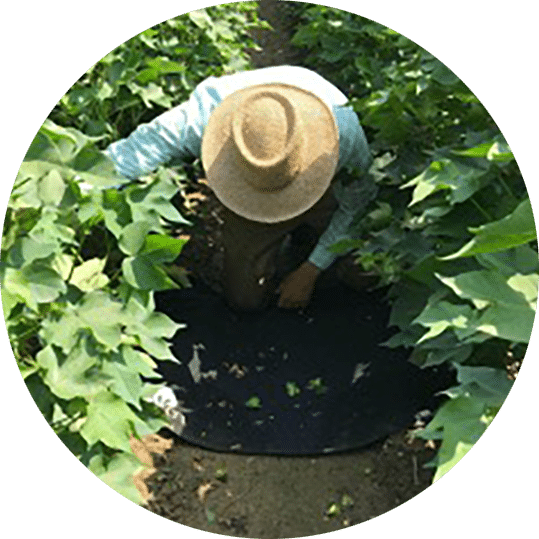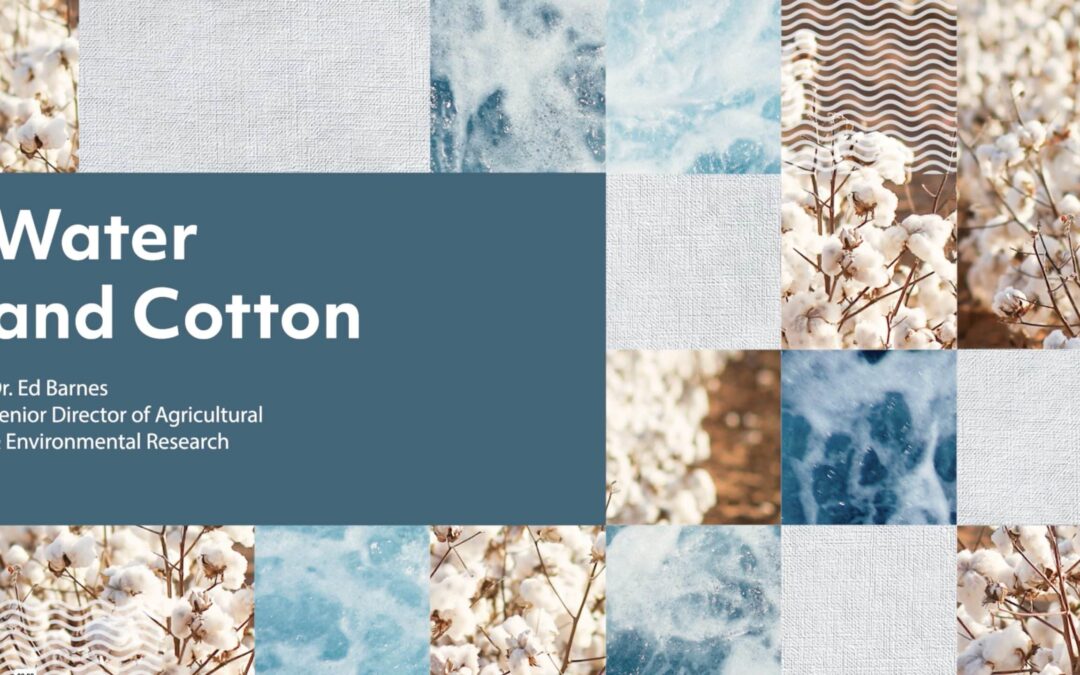Revitalizing Soil Health Through Regenerative Practices in Cotton Farming
Healthy soil forms the foundation for sustainable and productive agriculture, and its vitality is of utmost importance. In the face of soil degradation, cotton growers have embraced regenerative farming practices to combat this challenge and foster long-term environmental sustainability.
Regenerative agriculture applies a combination of practices that support climate resilience as well as positively impact the ecosystem. Here are some of those important regenerative practices.

No-till or Reduced-till Farming:
By minimizing soil disturbance through reduced or eliminated tillage, cotton growers are utilizing no-till or reduced-till farming. This practice preserves soil structure, can improve water infiltration and retention, reduces erosion and mitigates carbon emissions as compared to conventional tillage. Additionally, it enhances root development in cotton plants, making them more resilient to drought and other environmental stresses.
Did you know? Healthy soil acts as a sponge, enabling water to infiltrate rather than puddle and run off. Just a 1% increase in soil organic matter can boost water storage by over 20,000 gallons per acre [1].

Cover Cropping:
Cotton growers are reaping the benefits of cover cropping, which involves growing specific crops between cash crop cycles to protect and enhance the soil. Cover crops offer a multitude of advantages for cotton production, including improved soil health and fertility, reduced soil erosion and nutrient runoff, and increased organic matter and carbon sequestration. They also act as natural weed suppressants, minimizing the herbicide applications, and providing vital habitats for beneficial insects and pollinators.
Did you know? Cover crop roots serve as a habitat and food source for soil microorganisms. Just a gram of soil may contain millions of organisms and thousands of species of beneficial bacteria that decompose residue and cycle nutrients back into the soil [2].
Crop Rotation:
The strategic practice of crop rotation involves cultivating different crops in a specific sequence to enhance soil fertility, disrupt pest and disease cycles and improve soil structure. Cotton growers often rotate their crops with complementary plants like corn, soybeans and peanuts, which infuse nitrogen into the soil, reducing the reliance on synthetic fertilizers. Crop rotation also diversifies farm income, making the agricultural system more resilient to market fluctuations and climate extremes.
Did you know? Rotating crops with cotton can be an economically sound strategy for managing soilborne diseases, nematodes, and resistant weeds while increasing economic stability through crop diversification [3].

Integrated Pest Management (IPM):
Cotton growers embrace integrated pest management as a holistic approach to pest control, emphasizing the use of multiple strategies to minimize reliance on chemical pesticides. IPM aims to maintain pest populations below economically damaging levels while minimizing harm to humans, the environment and non-target organisms. In regenerative agriculture, IPM plays a crucial role in supporting soil health and biodiversity.
Did you know? Studies have demonstrated that natural enemy populations can significantly reduce pest numbers, such as whiteflies, bollworms and Lygus bugs [4],[4*].

Composting:
The emerging practice of composting involves recycling organic waste materials, including crop residues, manure and potentially old cotton clothing, to create a nutrient-rich soil amendment that enhances soil fertility and structure. Composting can offer significant cost savings and environmental benefits for farmers, as compost-amended soils require less nitrogen fertilizer. In cotton production, compost-amended soils have been shown to require 15-30% less nitrogen fertilizer compared to non-amended soils [5]. Availability of compost is often the limitation to increased adoption of this practice, however, Cotton Incorporated is actively researching on how to compost waste textiles and increase compost availability to growers.
Did you know? Composting not only reduces waste but also enriches the soil, fostering healthier cotton plants and more sustainable farming practices.
By embracing these regenerative practices, cotton growers are leading the way in revitalizing soil health and promoting sustainability in the cotton industry. Informed consumers and industry stakeholders can support efforts by choosing sustainable apparel options and advocating for initiatives like the Regenerative Cotton Fund and Climate Smart Cotton Program, which champions soil health and ecosystem conservation.
To learn more about some of they key challenges the industry faces as it adopts regenerative agriculture, click here.
THE LATEST

Water & Cotton
Discover the truth about cotton’s water usage. Is it really a water-thirsty crop? Learn about drought tolerance, water-saving practices, and how much water is needed to make a cotton t-shirt.
Cotton’s Natural Biodegradability: Water
Discover why cotton is a sustainable choice. Cotton is a biodegradable, drought-tolerant crop and helps reduce plastic waste in our oceans. Check the label for cotton and help save our water.
Amid Increasing Climate Change Challenges, Cotton Continues to Make Water...
Water remains one of the most important resources due it its impact on our everyday lives, especially as we work with our changing environment. The impact of climate change, however, has made it challenging for growers to manage this resource. Currently, nearly half...